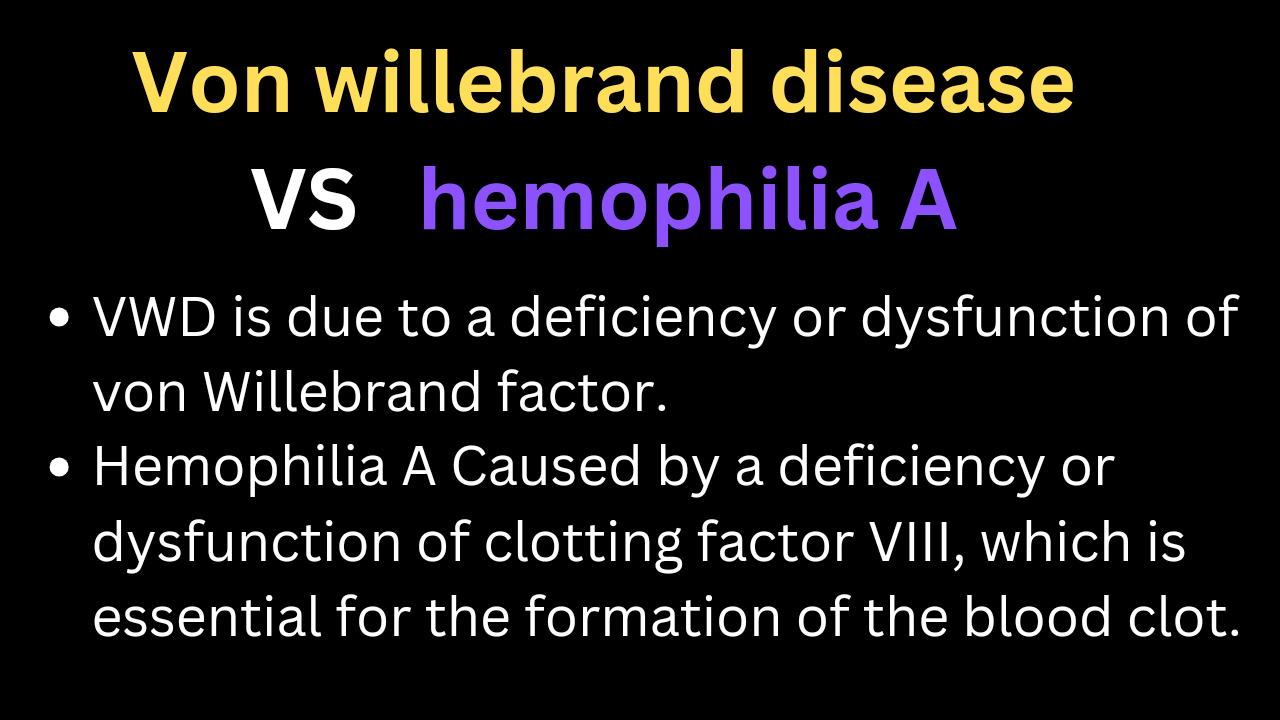Von Willebrand Disease (VWD) and Hemophilia A are both bleeding disorders. They differ in their causes. Their clinical features and management strategies are also distinct.
Causes difference
- Von Willebrand Disease (VWD):
- This condition is due to a deficiency or dysfunction of von Willebrand factor (vWF). This protein is involved in platelet adhesion and the stabilization of factor VIII.
- It is the most common inherited bleeding disorder.
- Hemophilia A:
- Caused by a deficiency or dysfunction of clotting factor VIII, which is essential for the formation of the blood clot.
- It is an X-linked recessive disorder, primarily affecting males.
Inheritance difference
- VWD:
- Typically autosomal dominant (most cases), but some severe forms can be autosomal recessive.
- Affects both males and females equally.
- Hemophilia A:
- X-linked recessive, primarily affecting males. Females are usually carriers but can have mild symptoms.
Clinical Features difference
- VWD:
- Mucocutaneous bleeding (e.g., nosebleeds, gum bleeding).
- Easy bruising.
- Heavy menstrual bleeding in women (menorrhagia).
- Prolonged bleeding after surgery or injury.
- Hemophilia A:
- Deep tissue bleeding (e.g., muscle hematomas, joint bleeds).
- Spontaneous hemarthroses (bleeding into joints), leading to joint damage over time.
- Prolonged bleeding after trauma or surgery.
Laboratory Findings difference
- VWD:
- Prolonged bleeding time.
- Prolonged partial thromboplastin time (PTT) in some cases (due to factor VIII binding issues).
- Low vWF levels.
- Low or normal factor VIII levels.
- Hemophilia A:
- Prolonged PTT.
- Normal bleeding time.
- Low factor VIII levels.
Diagnosis difference
- VWD:
- vWF antigen levels.
- vWF activity (ristocetin cofactor assay).
- Multimer analysis of vWF.
- Hemophilia A:
- Factor VIII activity assay.
Treatment difference
- VWD:
- Desmopressin (DDAVP): Increases release of vWF and factor VIII.
- vWF-containing factor concentrates for severe cases.
- Antifibrinolytics (e.g., tranexamic acid) for mucosal bleeding.
- Hemophilia A:
- Recombinant or plasma-derived factor VIII concentrates.
- Emicizumab (a bispecific antibody mimicking factor VIII) for prophylaxis in severe cases.
Key Differences in Bleeding Patterns
- VWD: Bleeding tends to be mucosal and mild.
- Hemophilia A: Bleeding is often deep, involving muscles and joints, and can be severe.

2 thoughts on “Von willebrand disease vs hemophilia A: 5 Keys differences”